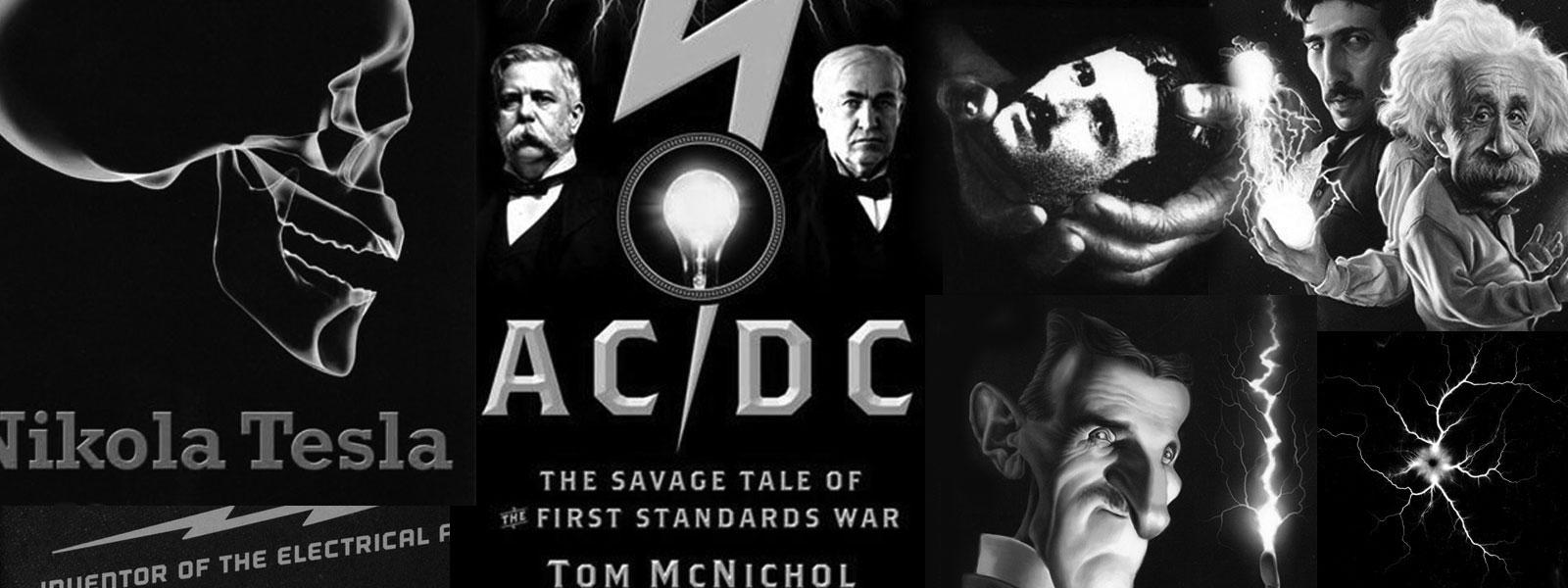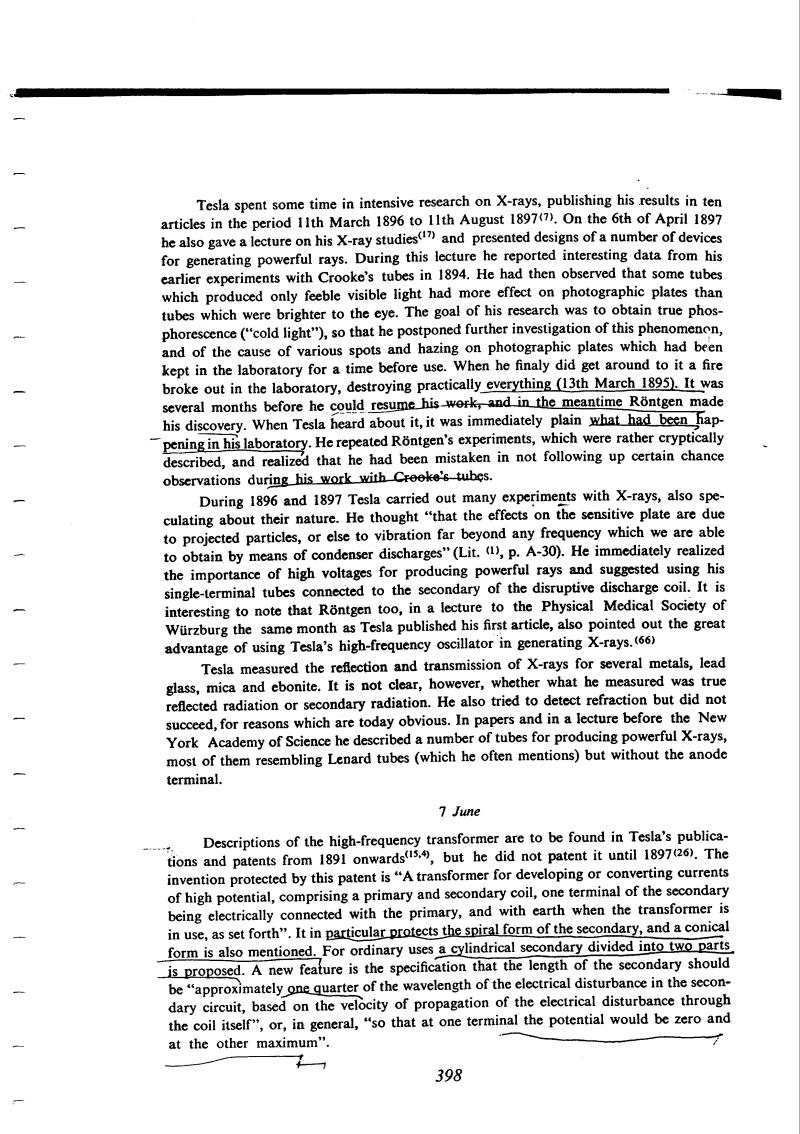
Nikola Tesla Books
398
N. Tesla, LECTURES, PATENTS, ARTICLES, published by Nikola Tesla Museum, Belgrade, 1956 (from now on: Tesla), âThe transmission of electric energy without wiresâ, Electr. World and Eng. March 5, 1904, A-153.
Tesla: âExperiments with alternate currents of very high frequency and their application to methods of artificial illuminationâ, a lecture delivered before the AIEE, May 20, 1891, L-15.
Tesla: âOn Roentgen raysâ, El. Rev. March 11, 1896, A-27, A-32
âOn reflected Roentgen rays, El. Rev. April 1, 1896, A-34
âOn Roentgen radiationsâ, El. Rev. April 8, 1896, A-39
âRoentgen ray investigationsâ, El. Rev. April 22, 1896, A-43
âAn interesting feature of X-ray radiationsâ, El. Rev. July 8, 1896, A-49
âRoentgen rays or streamsâ, El. Rev. August 12, 1896, A-51
âOn the Roentgen streamâ, El. Rev. Dec. 1, 1896, A-56
âOn the hurtful actions of Lenard and Roentgen tubesâ, El. Rev. May 5, 1897, A-62
âOn the source of Roentgen rays and the practical construction and safe operation of Lenard tubesâ, El. Rev. Aug. 11, 1897, A-69.
Tesla: âSystem of electric lightingâ, U.S. Patent 454 622, June 23, 1891, Appl. Apr. 25, 1891, P-208.
âElectric incandescent lampâ, U.S. Patent 455 069, June 30, 1891, Appl. May 14, 1891, P-213.
Tesla N. âThe stream of Lenard and Roentgen and novel apparatus for their productionâ. Lecture before New York Academy of Science, Apr. 6, 1897 (Nikola Tesla Museum, Belgrade)
Tesla: âElectrical transformerâ, U.S. Patent, 593 138, Nov. 2, 1897, Appl. March 20, 1897, P-252
Bowers B. X-RAYS, Science Museum, London, 1970.

